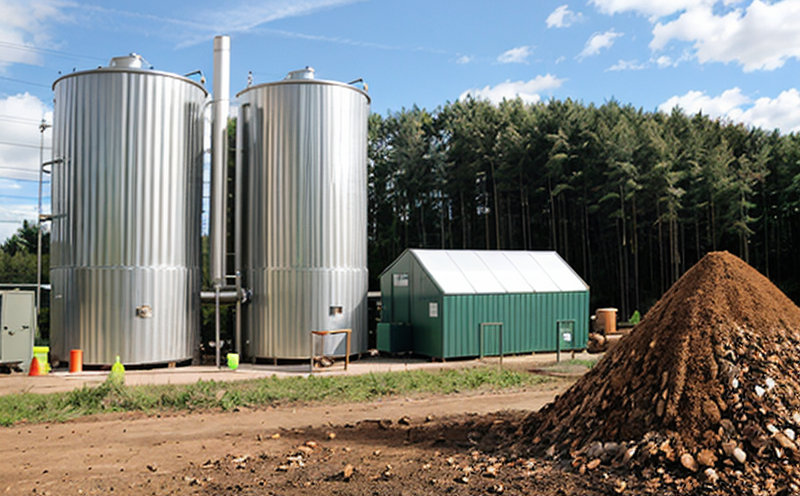ISO 23874 Ash Fusibility of Waste-to-Energy Fuels
The ISO 23874 test method is a critical procedure for assessing the ash fusibility properties of waste-to-energy (WtE) fuels. This property is essential because it provides information on how the fuel behaves under high temperatures, which directly impacts its suitability as an input material in WtE plants. High levels of fusible materials can lead to slagging and fouling within the combustion chamber, reducing operational efficiency and increasing maintenance costs.
The test involves heating a sample at controlled rates and observing the temperature at which specific ash components begin to form liquid bridges or fully melt. This information helps operators understand the fuel's potential for creating slag, which can be problematic in WtE plants where proper management is crucial for minimizing downtime and maximizing efficiency.
Understanding fusibility also aids in optimizing combustion processes, ensuring that only appropriate materials are used to generate energy efficiently without compromising plant integrity. By adhering to ISO 23874 standards, laboratories can provide reliable data to support the development of better waste management practices and more sustainable energy solutions.
For quality managers and compliance officers, this service ensures adherence to international standards, facilitating smoother regulatory processes and enhancing stakeholder confidence in the performance of WtE facilities. For R&D engineers, it offers insights into material properties that can drive innovations in fuel composition and processing techniques. And for procurement teams, it helps identify high-quality suppliers who meet stringent quality criteria.
The ISO 23874 test is conducted using specialized equipment like furnace units designed to replicate the conditions found in WtE plants accurately. Specimens are prepared according to specified guidelines provided by the standard, ensuring consistent results across different facilities and laboratories.
Once testing is complete, detailed reports are generated that include all relevant data points such as temperatures at which various ash components begin to form liquid bridges or fully melt. These findings enable stakeholders to make informed decisions regarding the suitability of specific waste streams for WtE conversion processes.
In summary, ISO 23874 plays a vital role in optimizing WtE operations by providing valuable insights into fuel behavior under extreme temperatures. This knowledge is instrumental in improving plant efficiency, reducing operational costs, and fostering sustainable practices within the industry.
Applied Standards
- ISO 23874 - Ash Fusibility of Waste-to-Energy Fuels
The ISO 23874 standard specifies the procedure for determining the ash fusibility properties of waste-to-energy fuels. This includes measuring the temperature at which different ash components begin to form liquid bridges or fully melt during controlled heating conditions. The test is designed to simulate the operating environment found in WtE plants, making it an essential tool for assessing fuel quality.
The standard provides clear instructions on specimen preparation, furnace setup, and observation procedures necessary to obtain accurate results. Compliance with these guidelines ensures consistent and reliable data that can be used confidently by various stakeholders within the sector.
Environmental and Sustainability Contributions
- Avoiding unnecessary waste disposal in landfills,
- Promoting efficient energy production from waste streams,
- Reducing greenhouse gas emissions by utilizing waste materials as fuel sources.
The ISO 23874 ash fusibility test contributes significantly to environmental sustainability efforts by facilitating the responsible use of waste-to-energy fuels. By ensuring that only suitable materials are converted into energy, this service helps minimize negative impacts on the environment while maximizing resource recovery.
Through accurate assessment of ash fusibility properties, laboratories like ours assist in optimizing WtE processes to reduce emissions further. This contributes not only towards cleaner air but also supports broader goals aligned with global environmental policies and agreements.
Use Cases and Application Examples
The ISO 23874 ash fusibility test is widely used in several contexts related to waste management and recycling, particularly when evaluating the suitability of various waste streams for conversion into energy through WtE processes. Here are some practical applications:
- Evaluating the quality of municipal solid waste (MSW) destined for incineration,
- Assessing industrial by-products as potential fuel sources,
- Optimizing feedstocks in mixed refuse-derived fuel (MRF) plants.
In each case, accurate testing according to ISO 23874 ensures that only appropriate materials are selected for WtE conversion processes. This not only enhances operational efficiency but also promotes sustainable waste management practices across industries.





